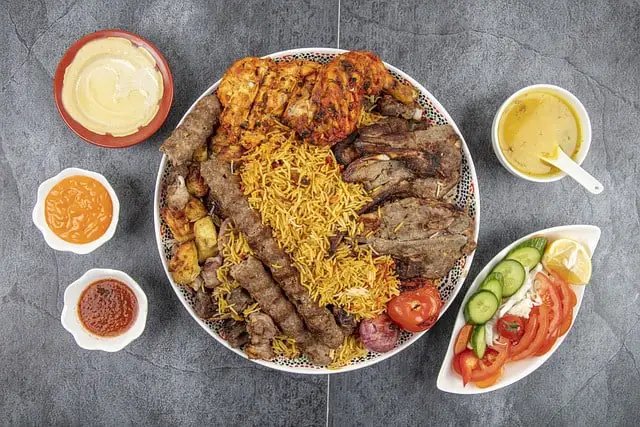In India, a variety of woods and ingredients are used to smoke foods, contributing to the diverse flavors found in different regional cuisines. As we’ll see below, Indian cuisine incorporates wood as well as other materials to burn when preparing foods.
Here are some commonly used woods and ingredients for smoking foods in India:
- Mango Wood
- Mango wood is widely used for smoking in Indian cuisine.
- It adds a sweet and fruity aroma to the smoked foods.
- Mango wood is particularly popular for smoking tandoori dishes, such as tandoori chicken and tandoori naan.
- Charcoal
- Charcoal is commonly used in Indian cooking for smoking meats, vegetables, and even spices
 .
. - It provides a neutral smoky flavor that allows the other ingredients and spices to shine.
- Charcoal is often used in traditional clay ovens (tandoors) and charcoal grills (barbecues).
- Charcoal is commonly used in Indian cooking for smoking meats, vegetables, and even spices
- Coconut Husks
- Coconut husks and shells are used as fuel for smoking in coastal regions of India.
- They impart a mild, sweet, and tropical aroma to the smoked foods.
- Coconut husks are commonly used for smoking fish and seafood dishes.
- Mustard Oil and Spices
- In some Indian cooking techniques, such as dum pukht and dhungar, smoking is done using a combination of mustard oil and spices.
- Whole spices like cinnamon, cloves, cardamom, and star anise are heated with mustard oil until they release their aroma and smoke.
- This technique is often used for smoking biryanis, curries, and other slow-cooked dishes.
- Tez Patta (Indian Bay Leaf)
- Tez patta, also known as the Indian bay leaf, is sometimes used for smoking in Indian cuisine.
- It provides a distinct fragrance and flavor to the smoked foods.
- Tez patta is commonly used for smoking rice dishes like pulao and biryani.
- Mesquite
- Mesquite wood is sometimes used in Indian cuisine, especially for grilling and smoking meat.
- It imparts a strong, smoky flavor that complements robustly flavored dishes.
It’s important to note that the choice of wood and ingredients for smoking foods may vary depending on regional preferences and local availability.
Different woods and ingredients lend their unique characteristics to the smoked dishes, adding depth and complexity to the flavors in Indian cuisine.
Equipment Used To Smoke Foods In India
Traditional smoking techniques in Indian cuisine often involve the use of specific equipment and methods rather than dedicated smokers commonly found in Western barbecue culture. Here are a few smoking methods used in India:
- Tandoor:
- The tandoor is a traditional clay oven widely used in Indian cuisine.
- It utilizes a combination of charcoal and radiant heat to cook and smoke foods.
- Marinated meats, such as chicken, lamb, or fish, are skewered and placed inside the tandoor, allowing them to be cooked and infused with smoky flavors simultaneously.
- Dhungar:
- Dhungar is a smoking technique used to impart smoky flavors to dishes.
- Hot charcoal is placed in a small metal bowl, and aromatic spices, ghee (clarified butter), or other smoking agents are added.
- The bowl is then placed directly over the dish, and the smoke is trapped within to infuse the flavors.
- This technique is commonly used for biryanis, lentil dishes, and curries.
- Sigri:
- The sigri is a small charcoal stove or grill often used for smoking and grilling in Indian cuisine.
- It is a portable and compact device that allows for direct heat and smoke application to foods.
- Meats, vegetables, and breads can be cooked or smoked using the sigri, offering a smoky and charred flavor.
- Handi:
- Handi refers to a traditional cooking vessel used in Indian cuisine.
- In some recipes, smoking is achieved by placing a small piece of burning charcoal on top of the prepared dish inside the handi.
- The dish is then quickly covered, allowing the smoke to infuse into the food.
These methods, along with other traditional cooking techniques, are utilized to achieve smoky flavors in Indian dishes. The focus is often on combining direct heat, the right ingredients, and spices to enhance the taste profiles rather than using dedicated smokers commonly seen in Western barbecue culture.

